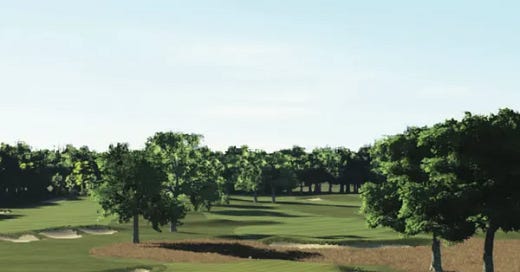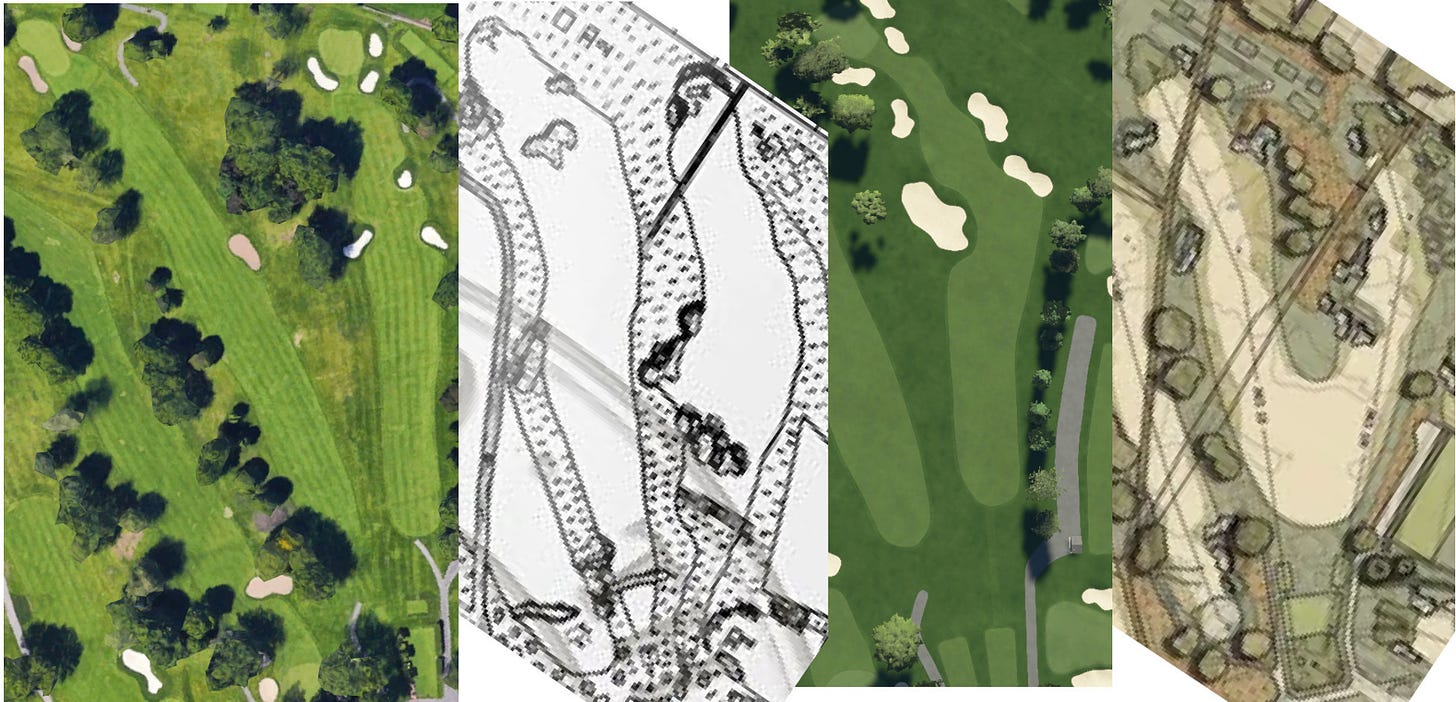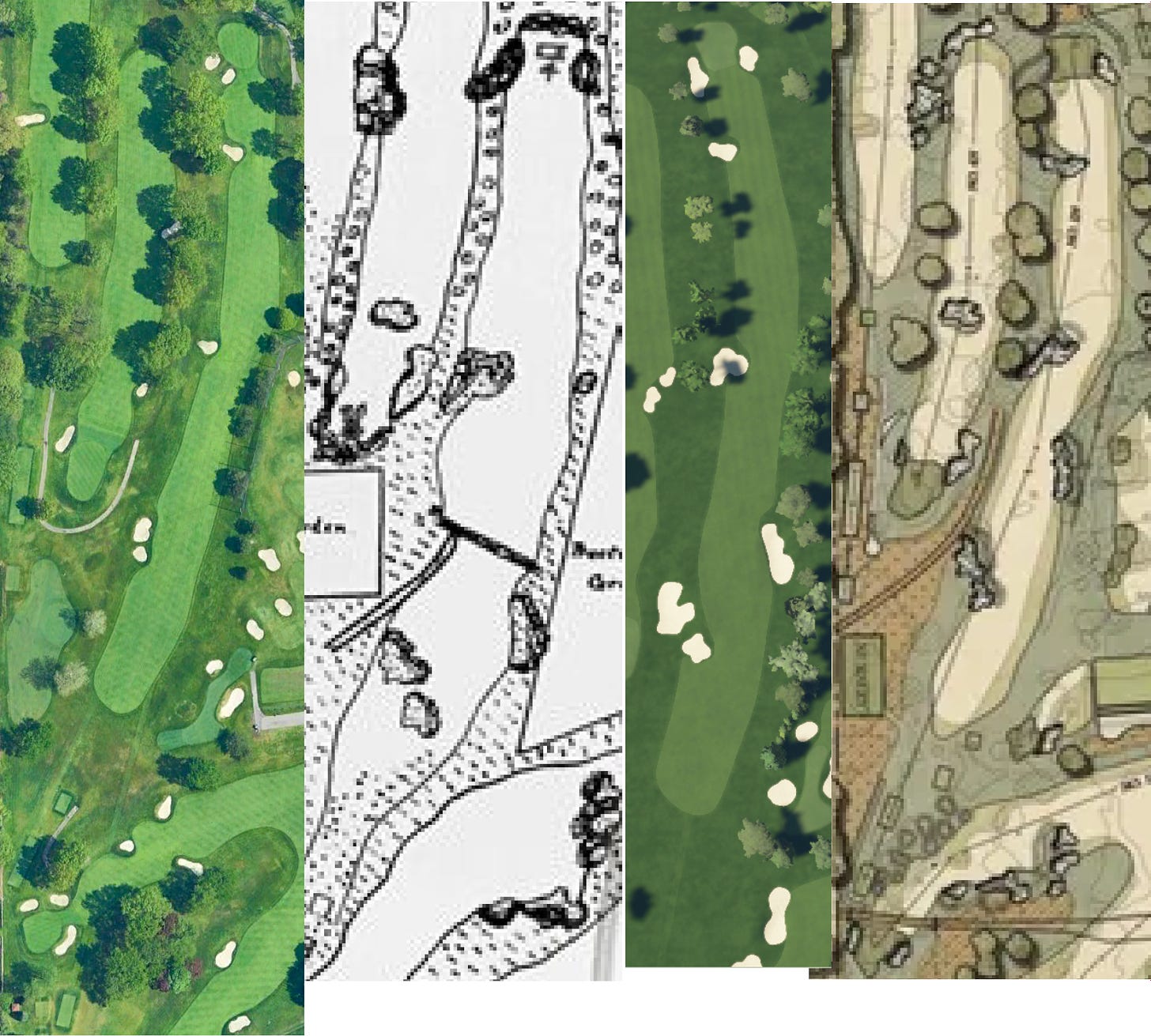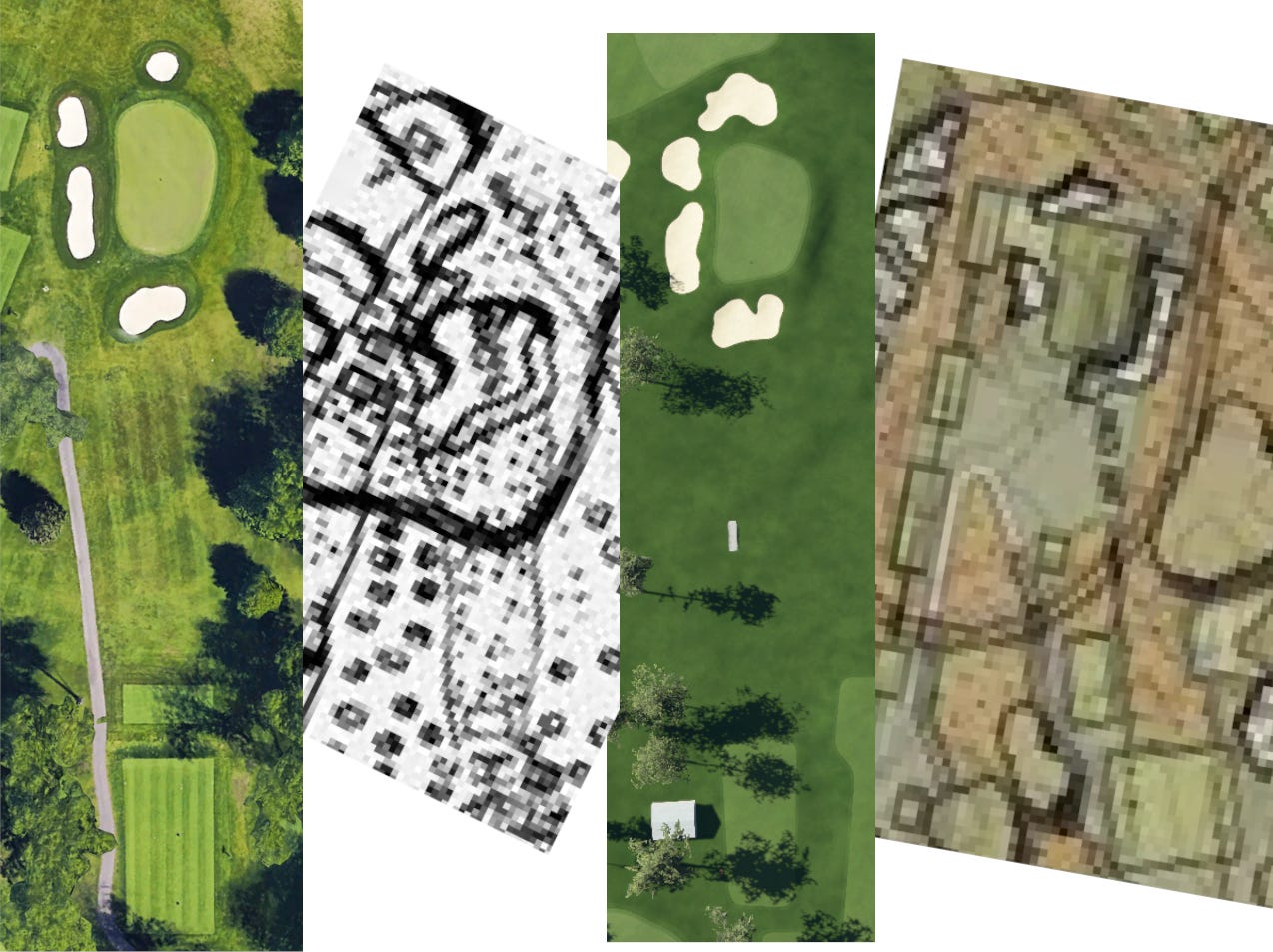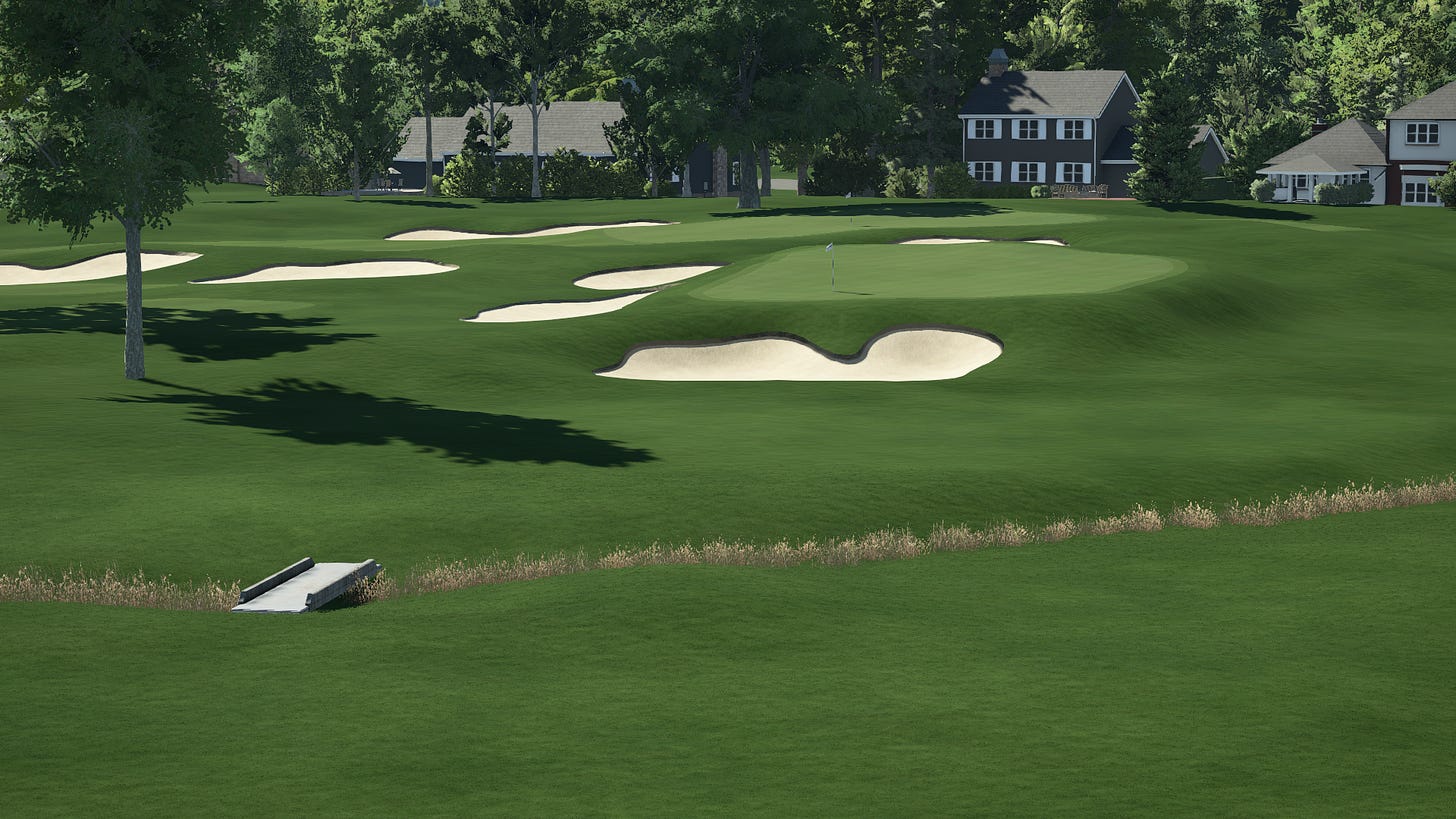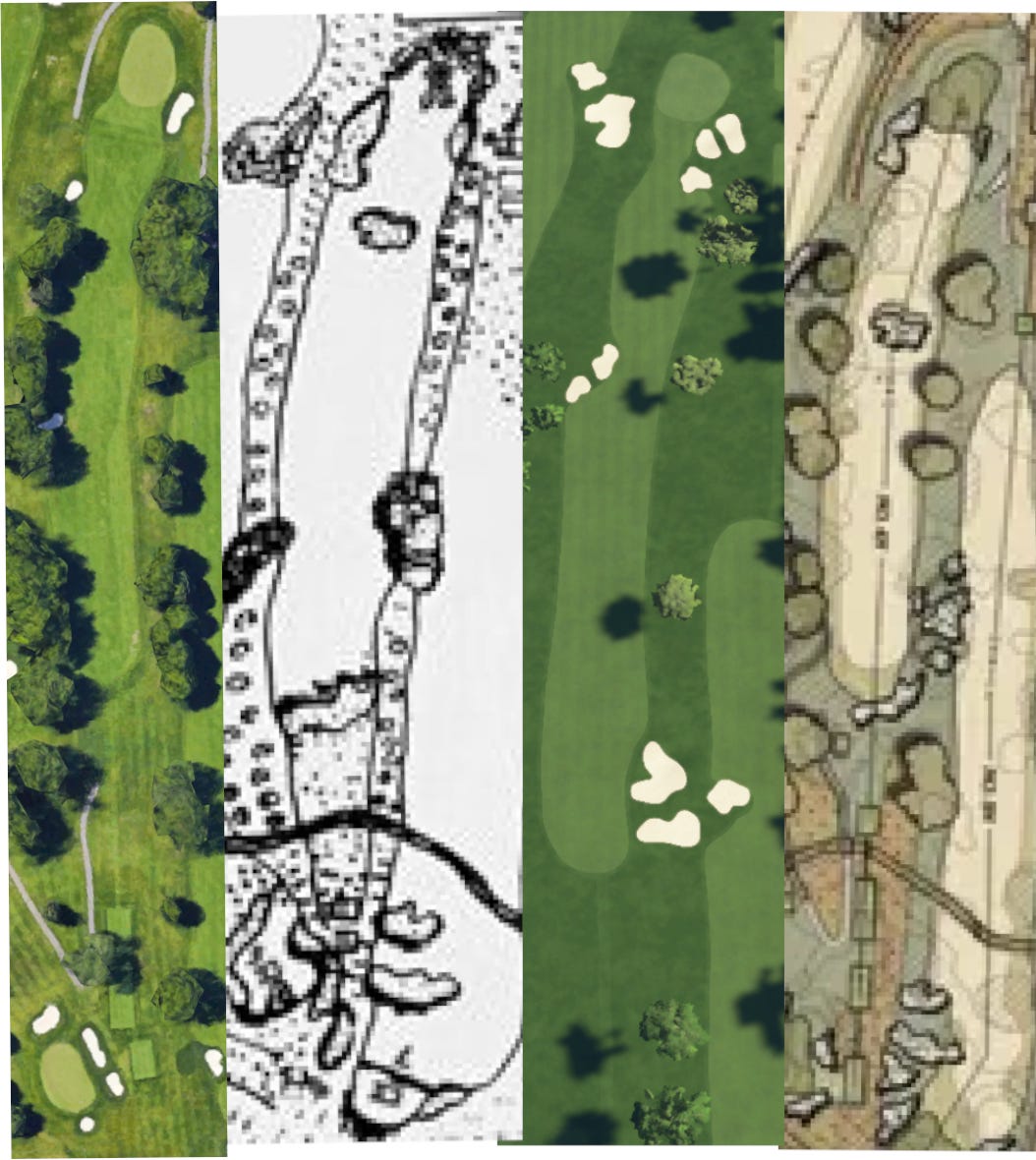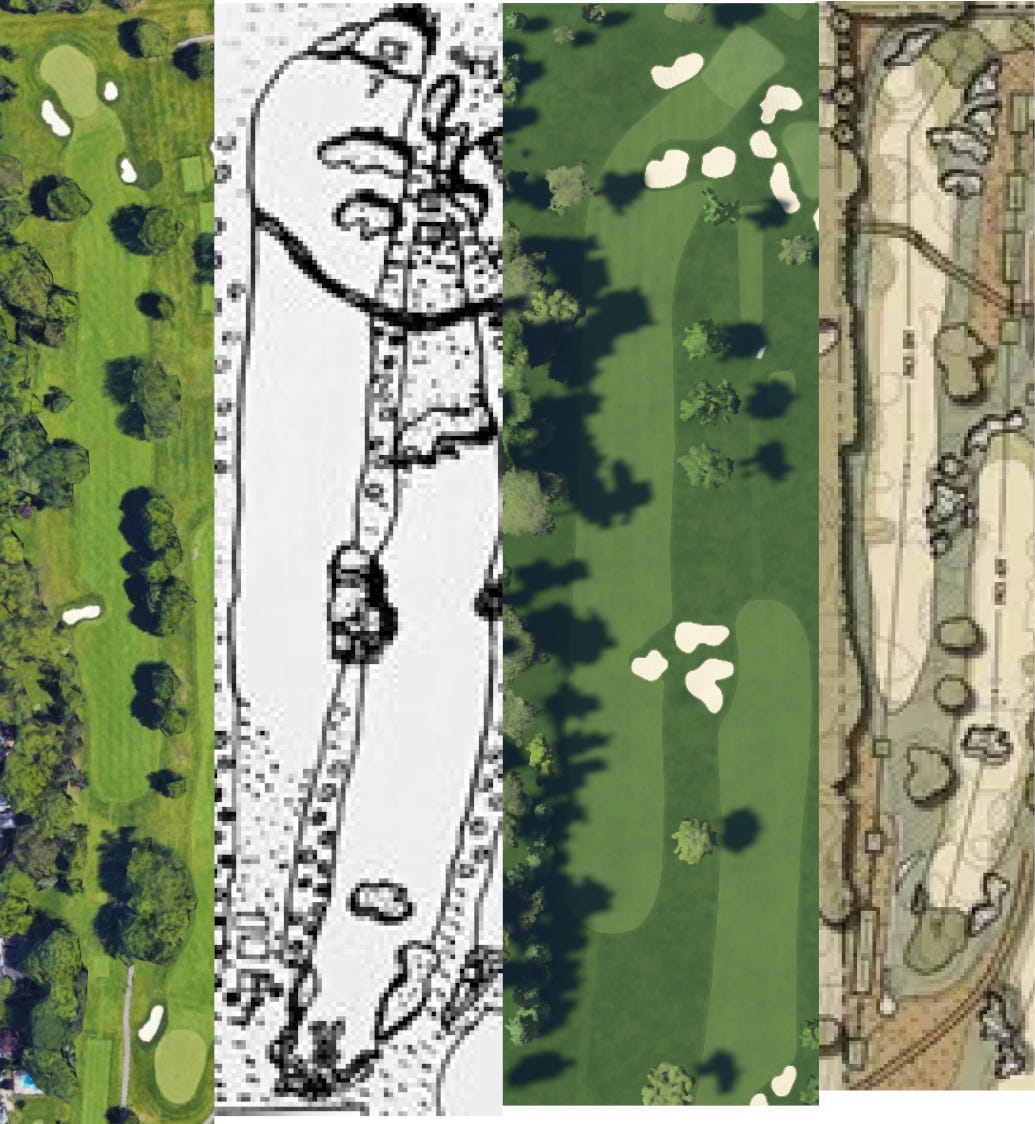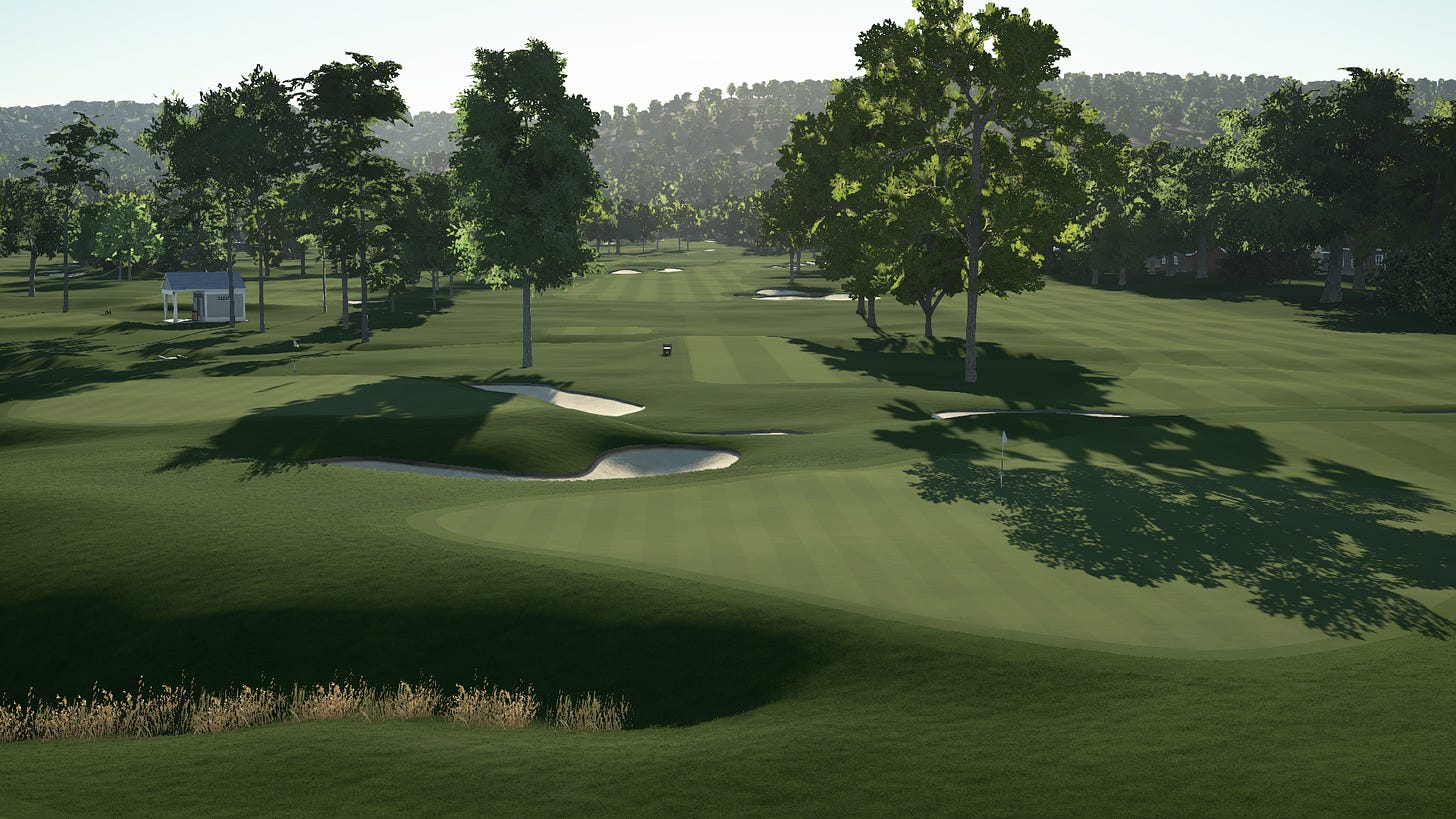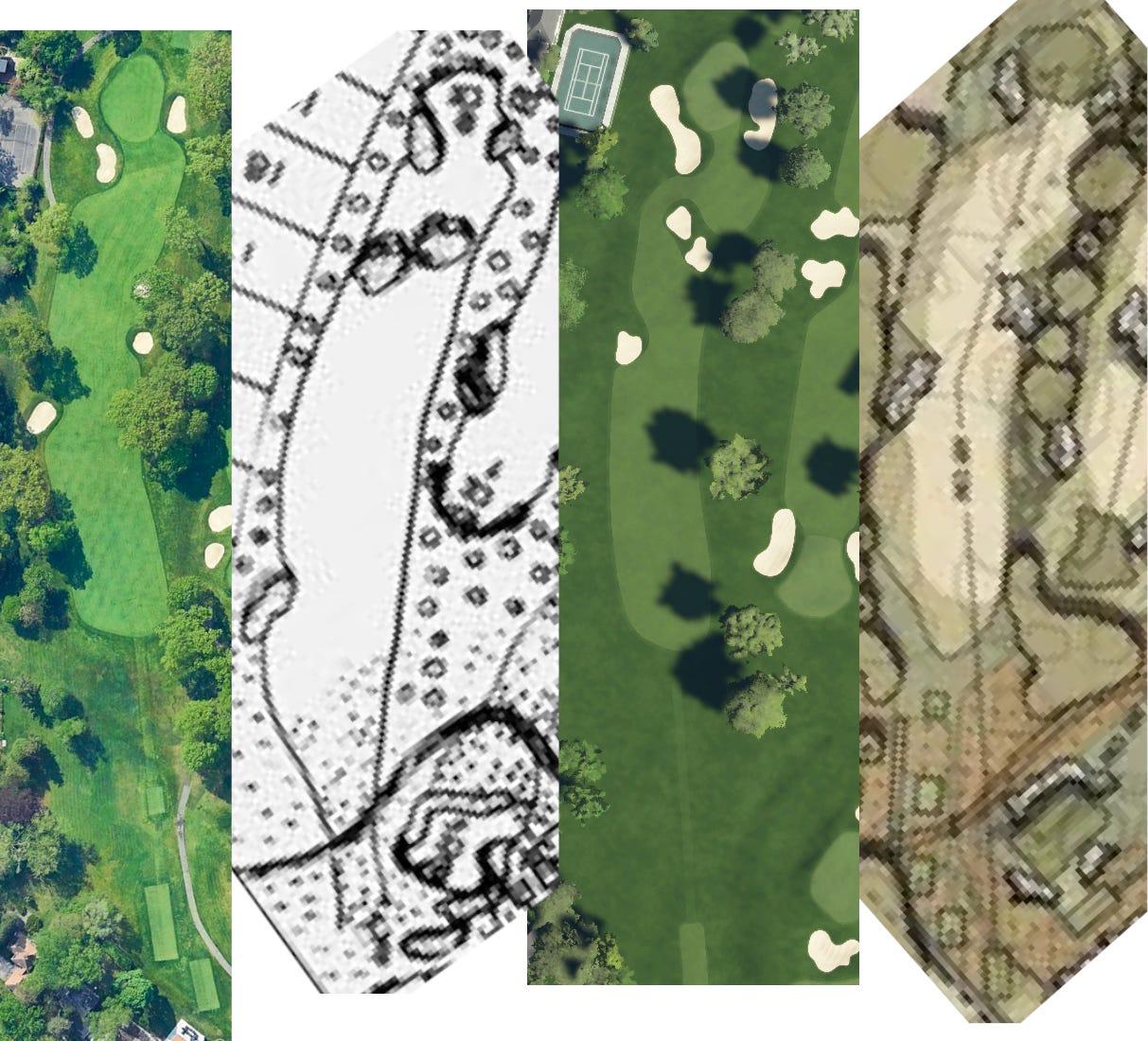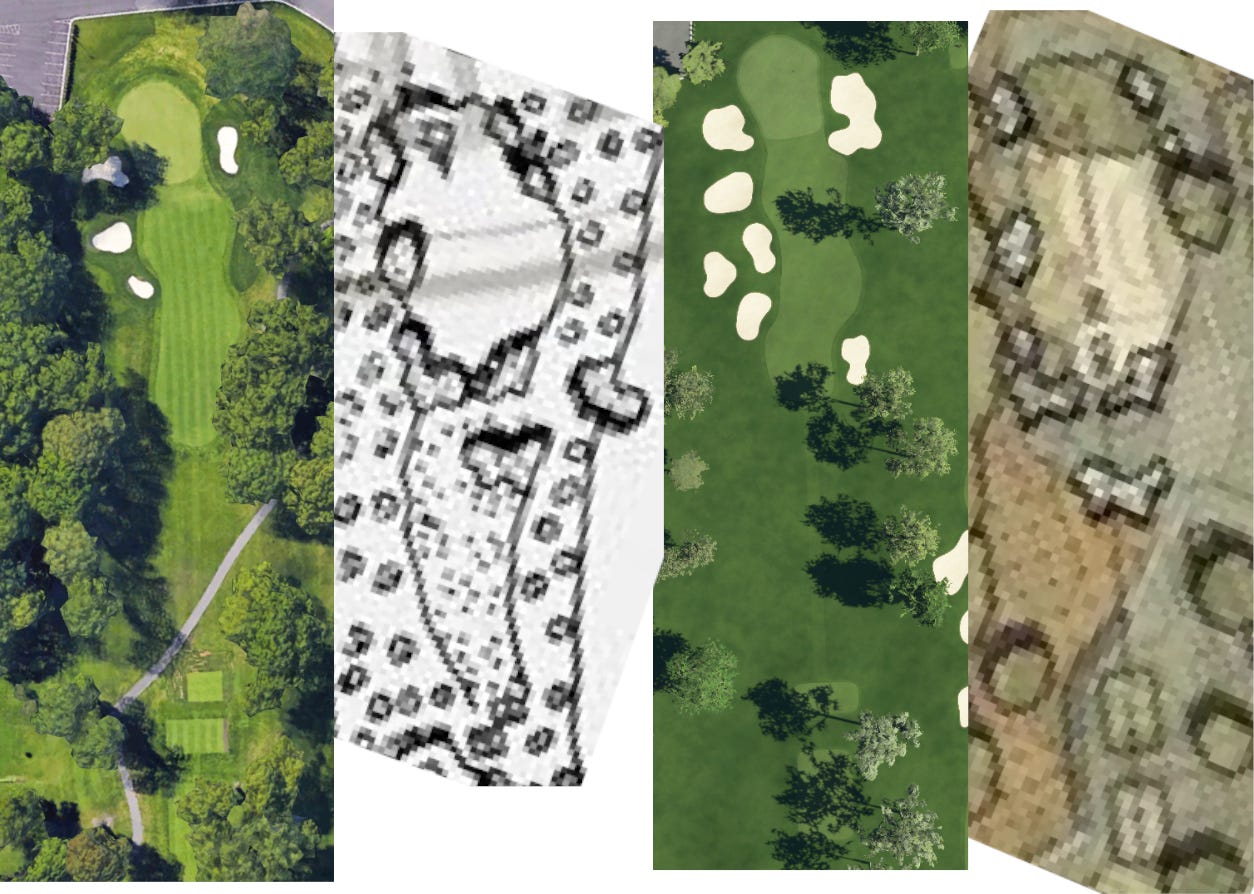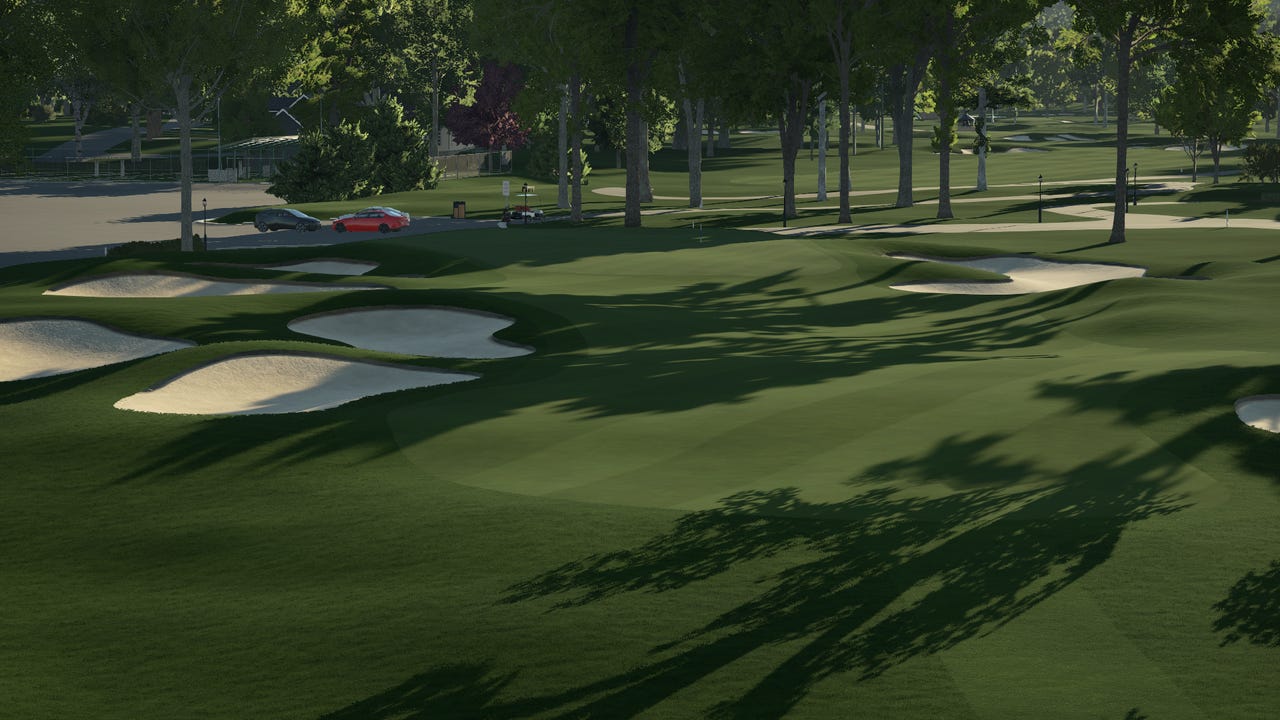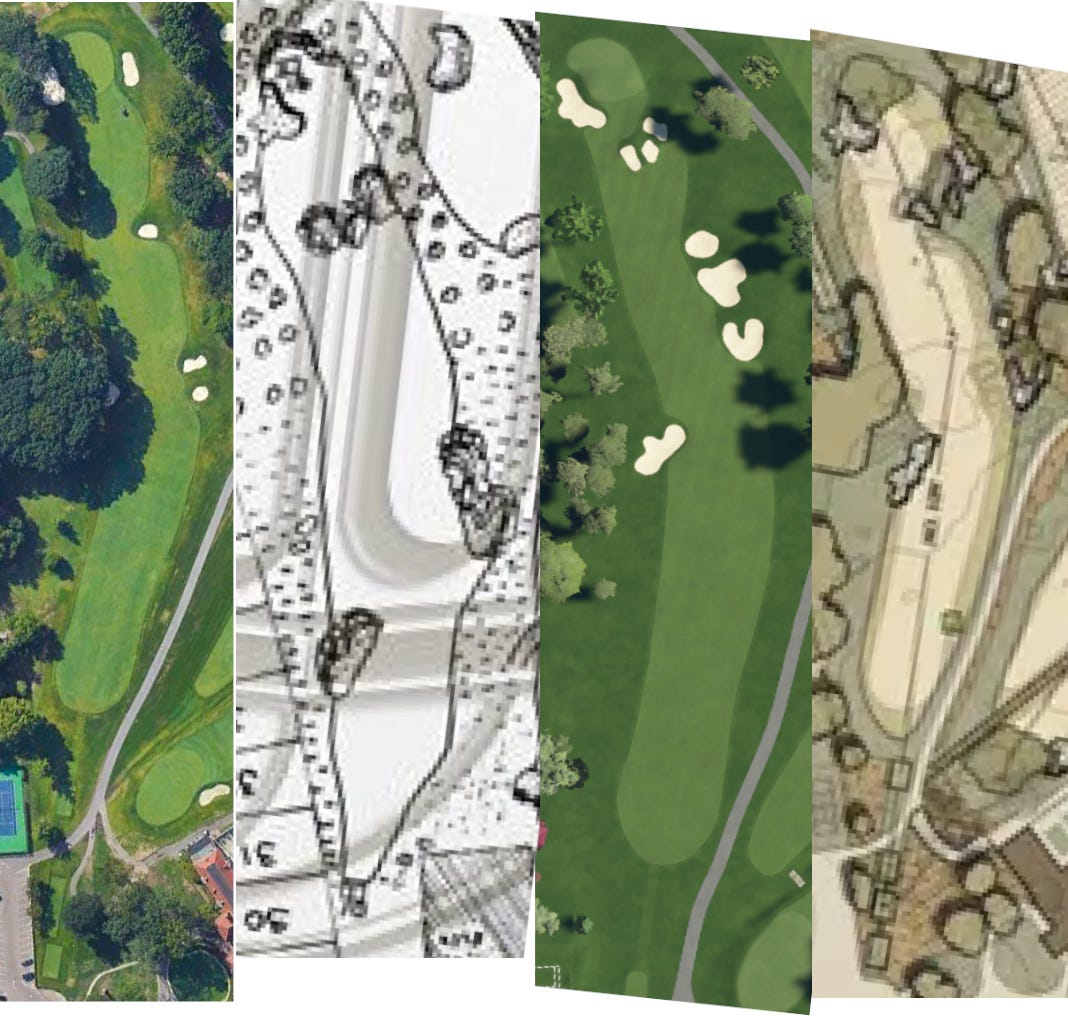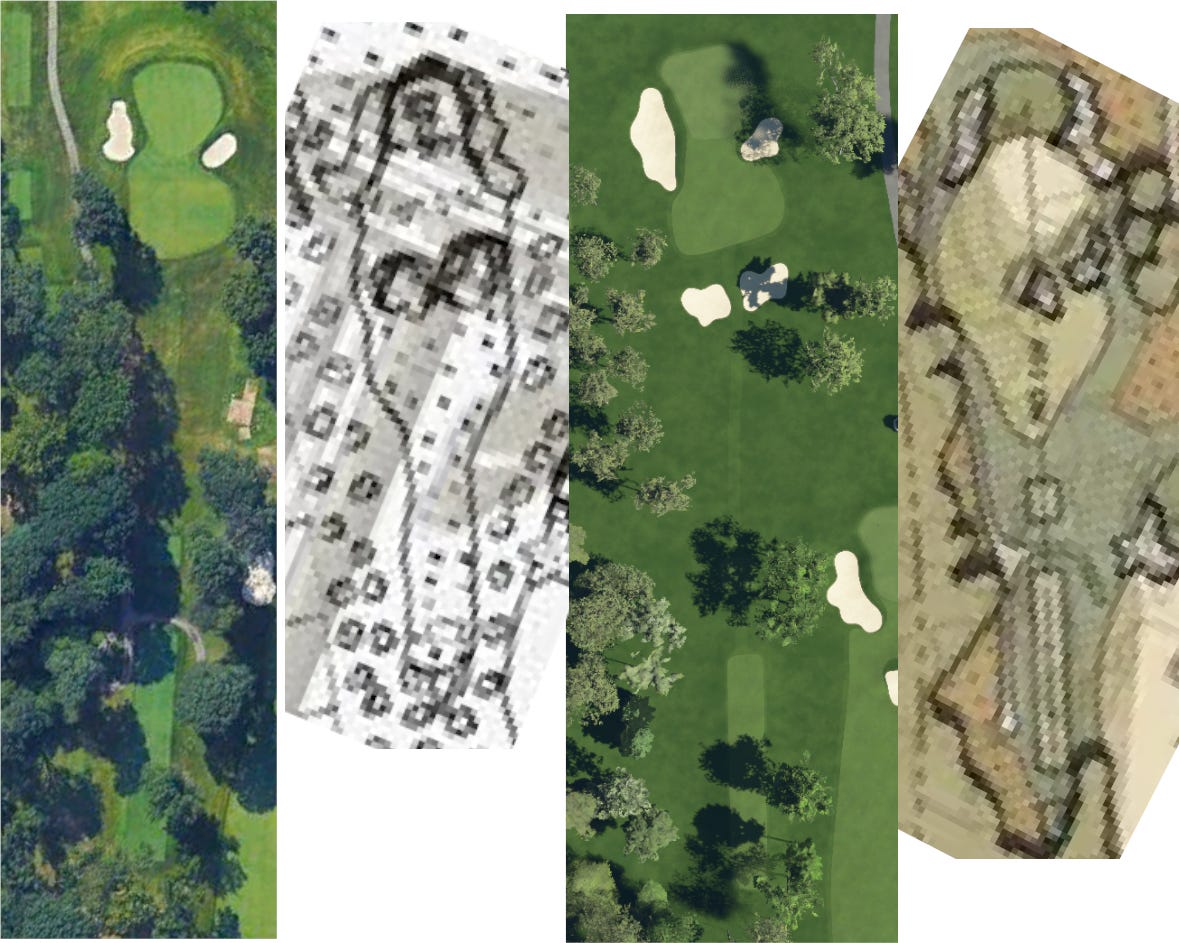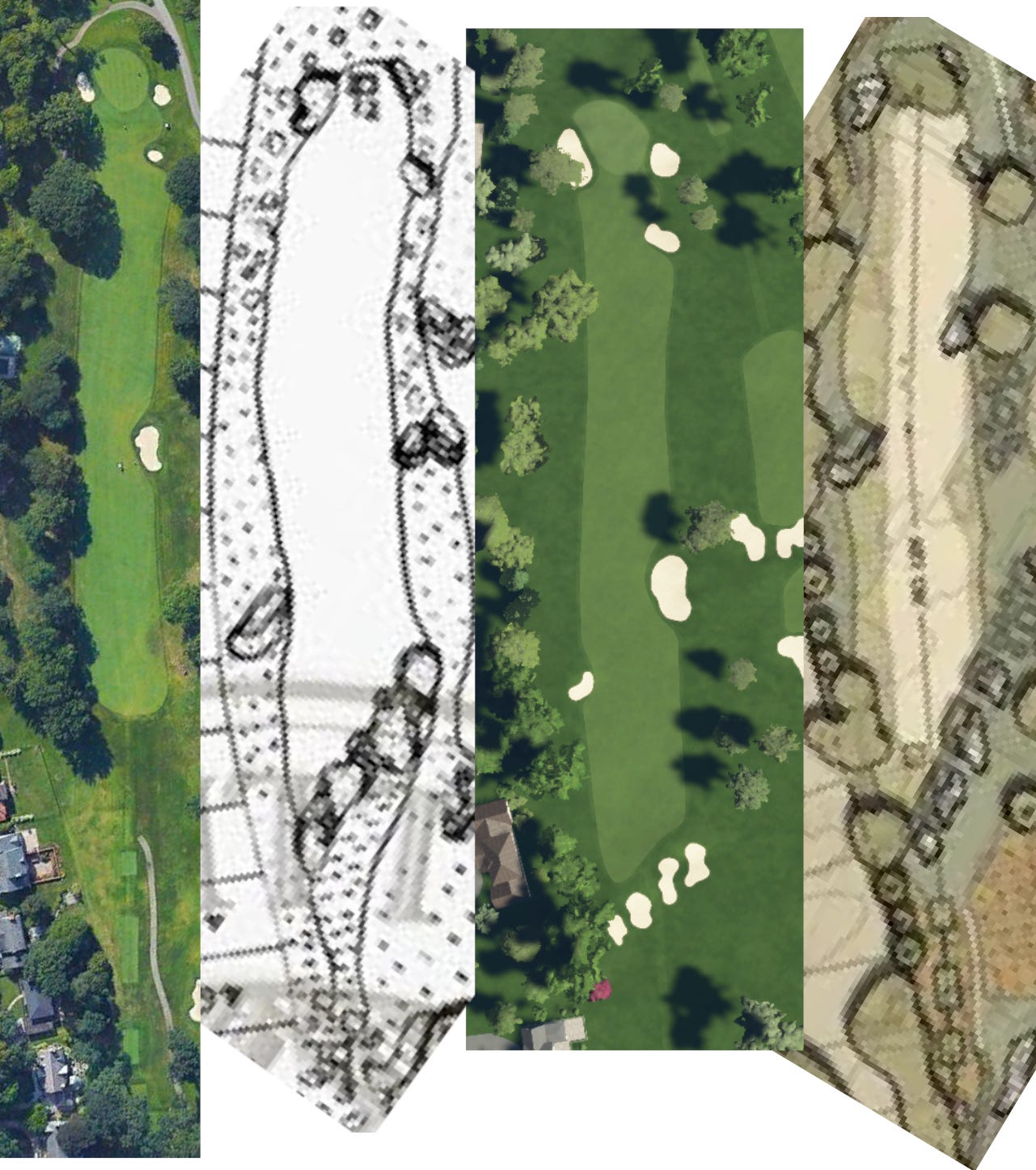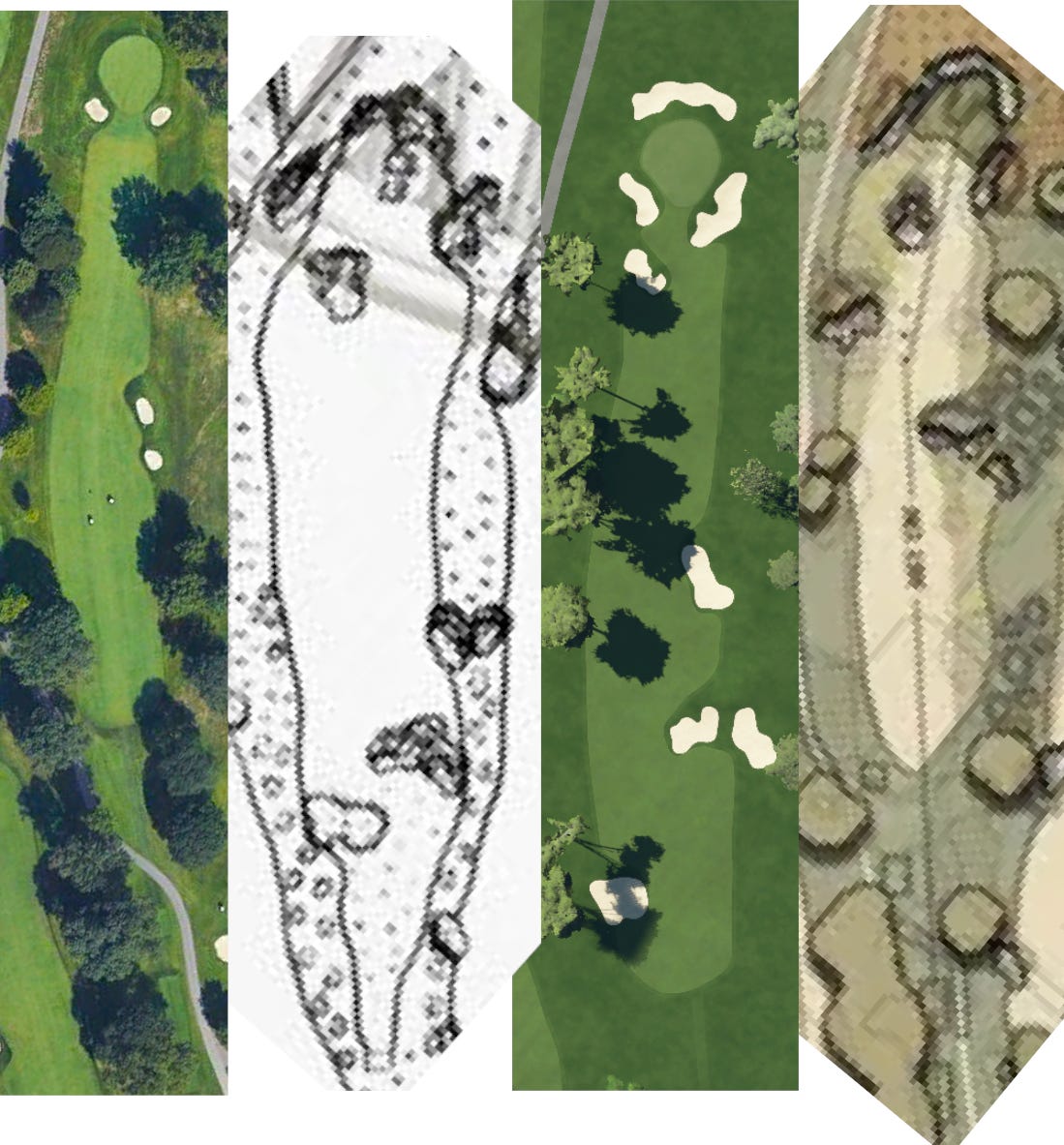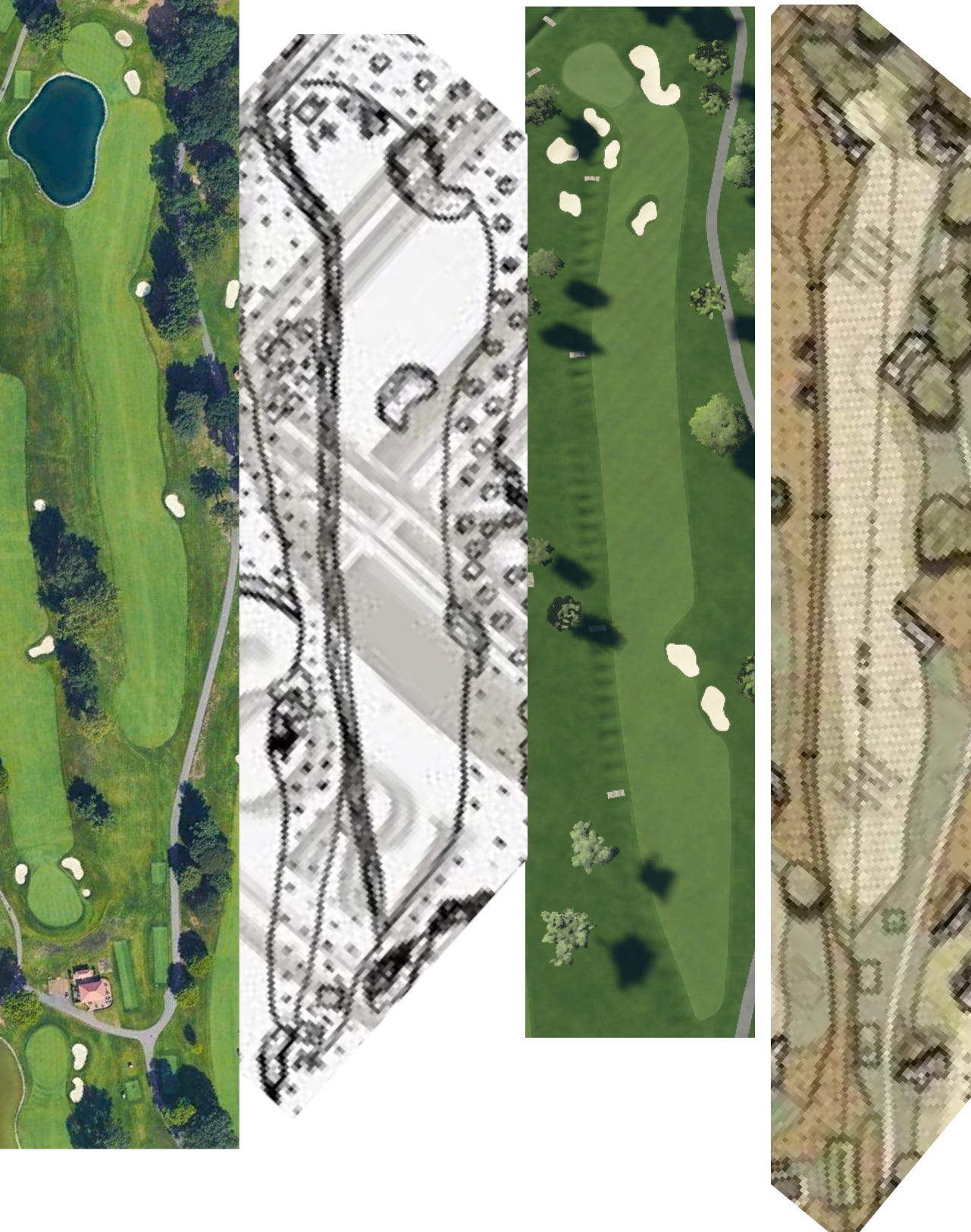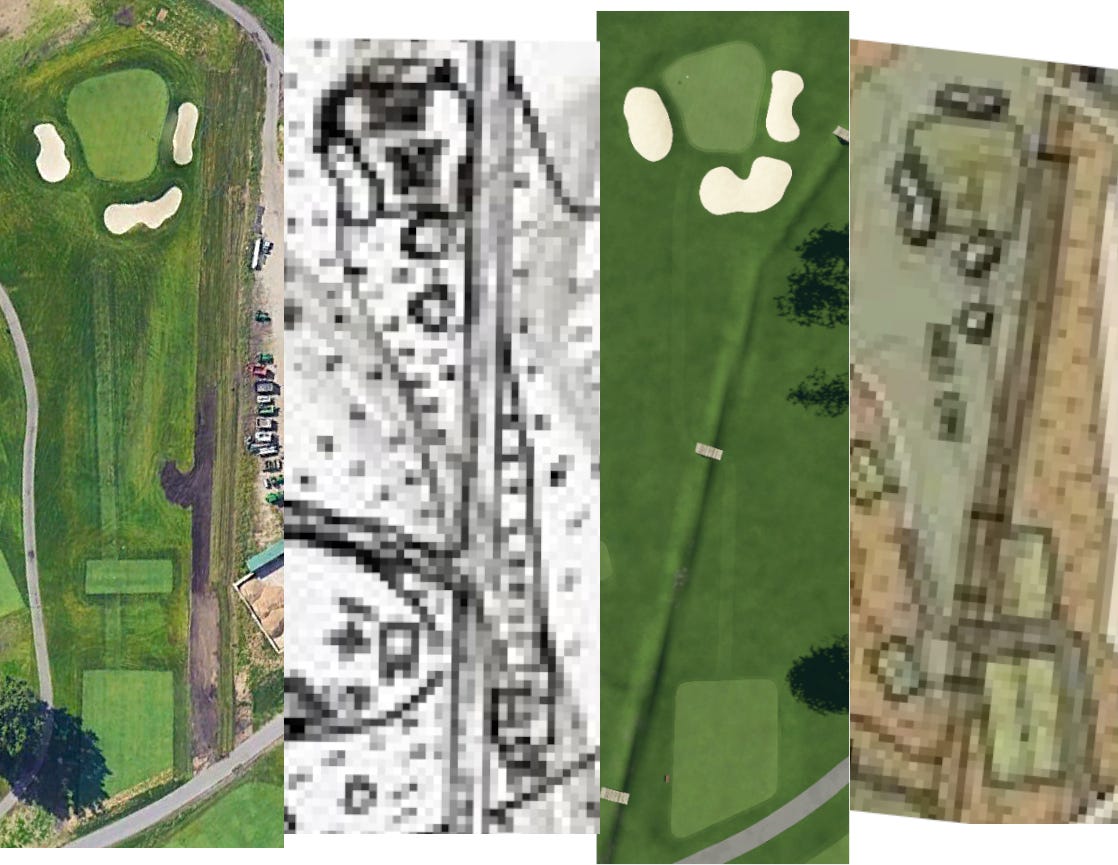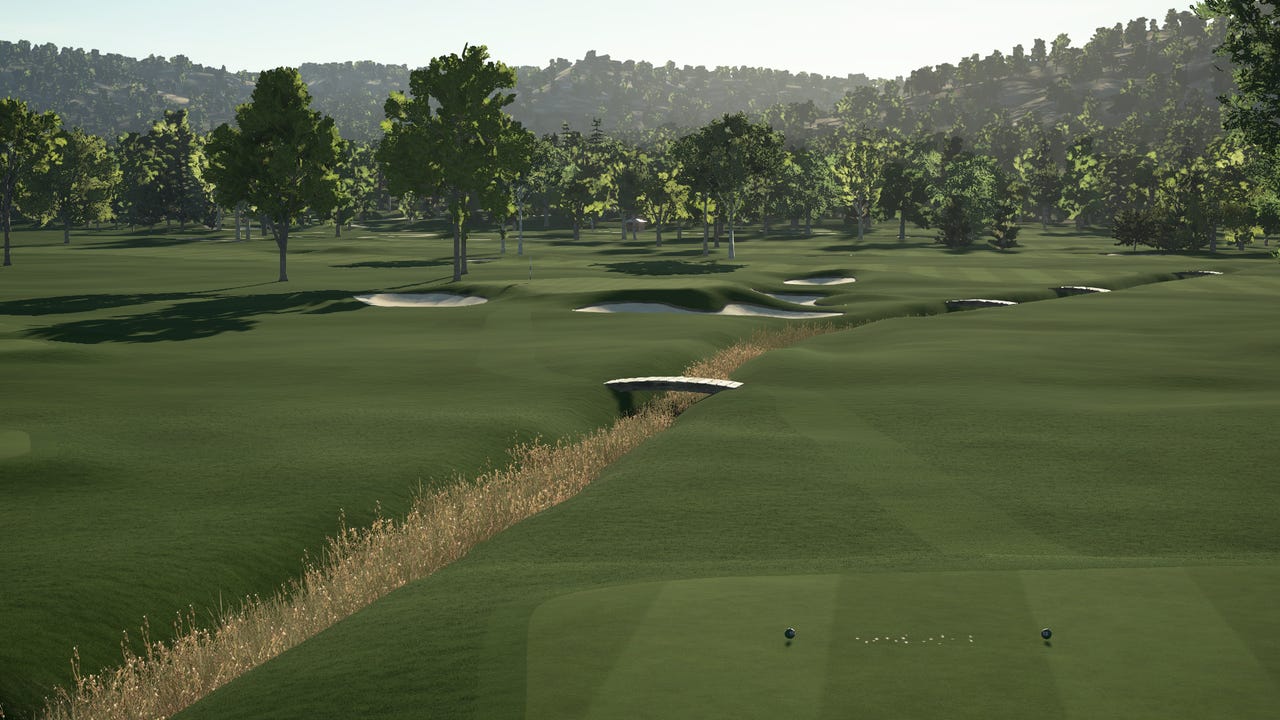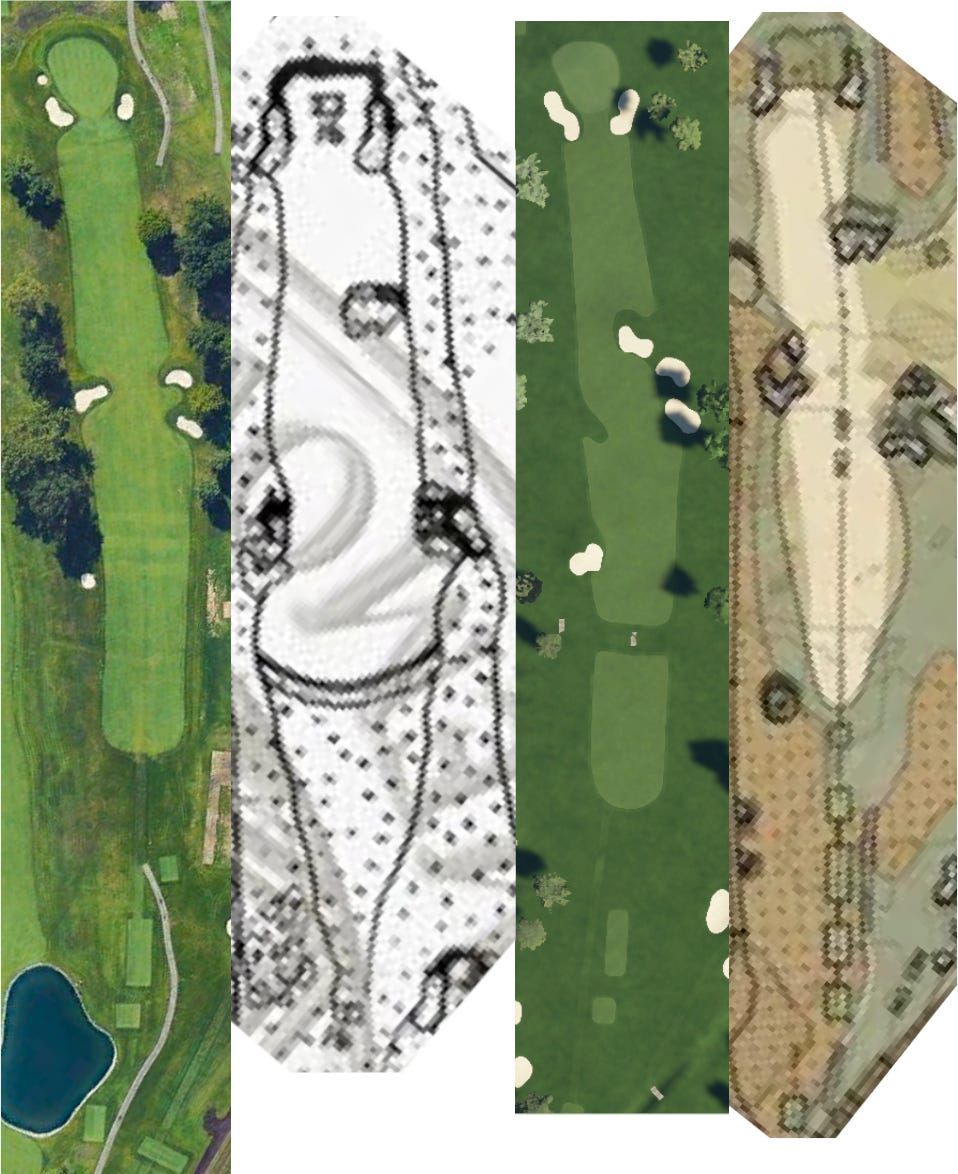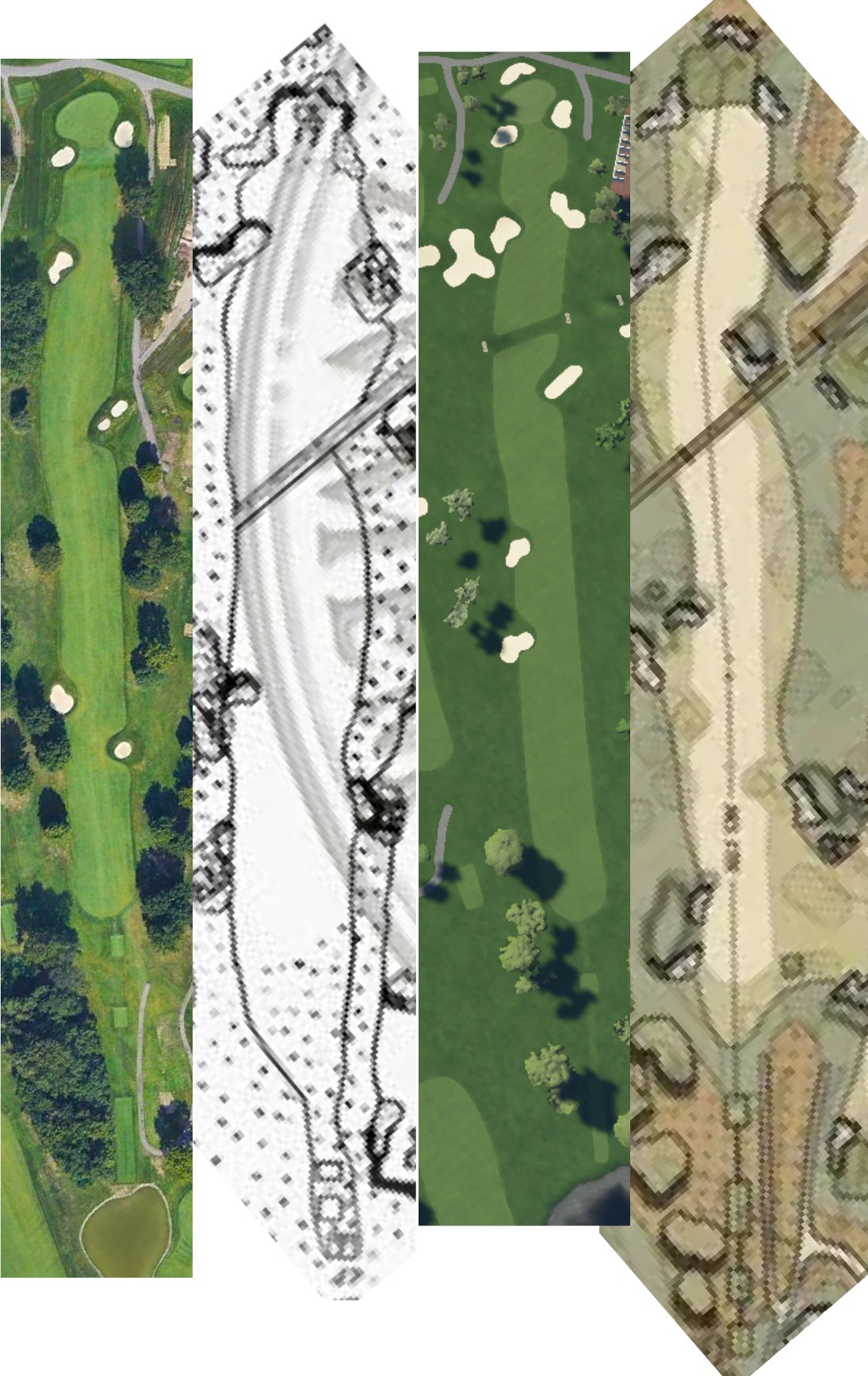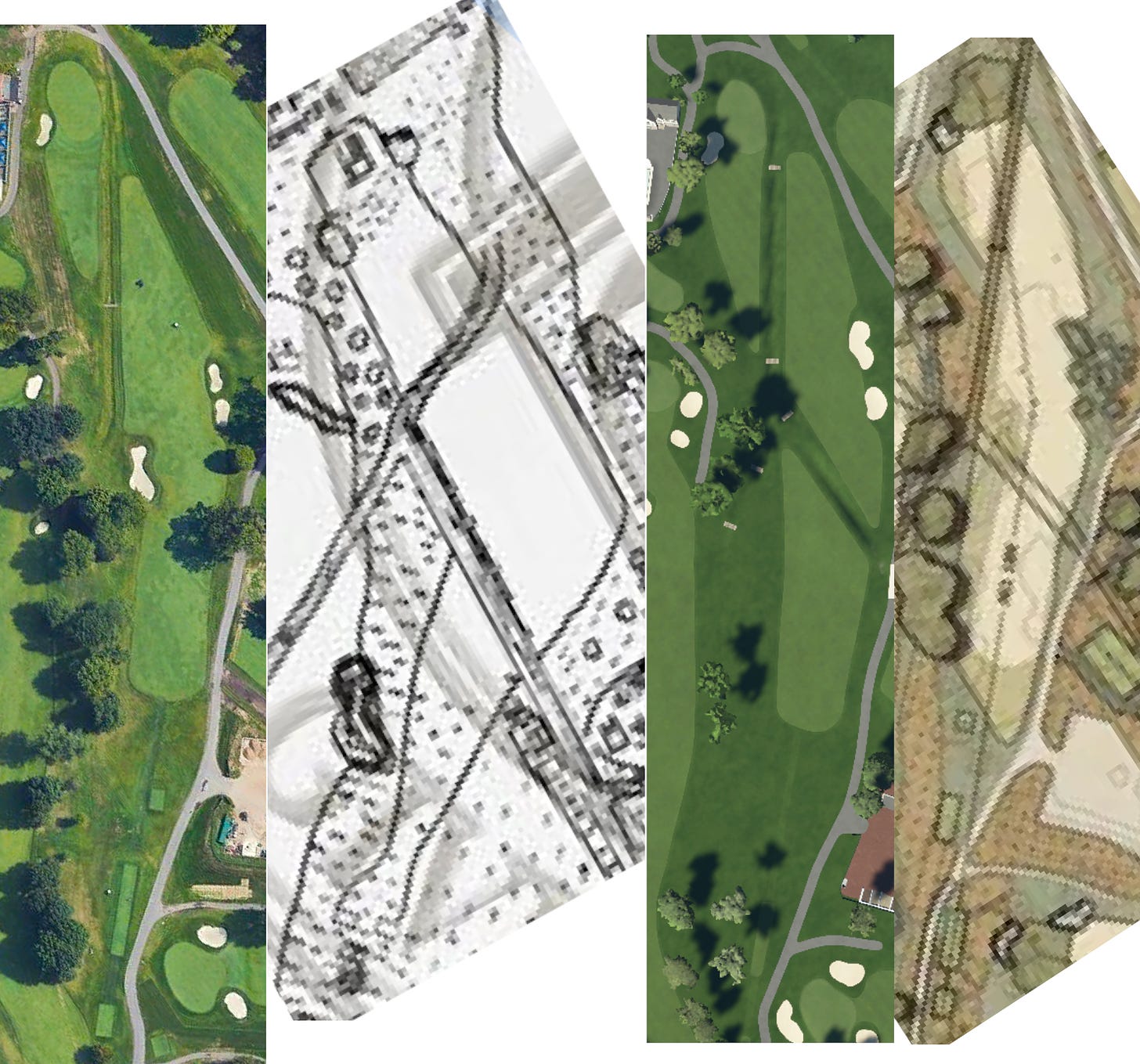Until I talk to more people, the answer to that question is… probably not. But maybe?
As I mentioned last week, Detroit Golf Club just narrowly approved a $16 million renovation plan, presented by architect Tyler Rae, that would see restoration efforts made to the course design taking place between the 2025 and 2026 Rocket Mortgage Classic. As part of the overall plan, the South course would also see a restoration done in subsequent years. This Detroit News article (paywall), which is actually from February before the vote occurred, goes into some deeper details about the plan.
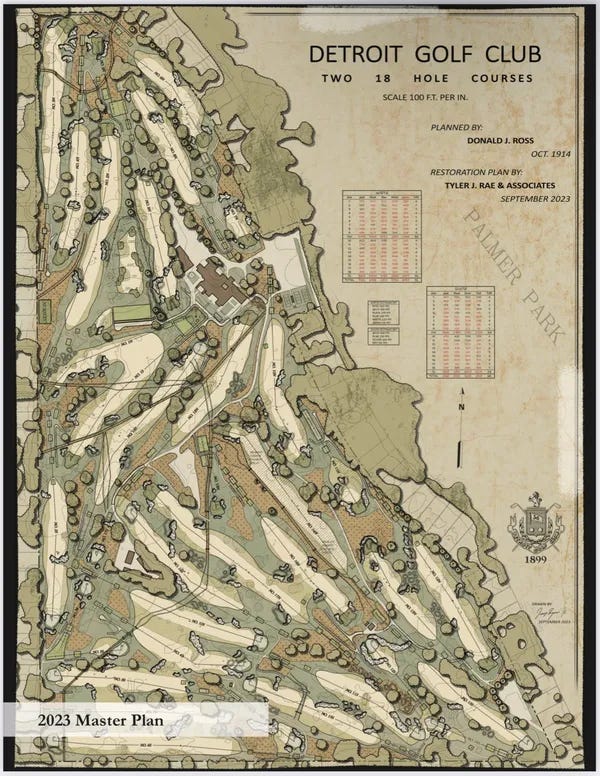
Early in the summer of 2023, I was contacted by someone who had seen my PGA 2K23 project called The Motown Club, 1916. Motown Club was something I first released at the end of 2020 as a fictional restoration of the North course at DGC. This person, presumably a member, told me off the record that the club was currently considering a master plan featuring many of the concepts that appeared in my rendition. There was even an inquiry into my possibly creating a virtual rendition of the master plan. Although as it turned out, Tyler Rae is actually quite adept at using the PGA 2K engine to create his own renditions for his projects.
If I get the chance to talk with Tyler, perhaps he can clarify how much, if any, inspiration he, the club, or anyone else involved in the master plan took from Motown Club. As I have studied Tyler’s master plan, he seems to have adhered very closely to Donald Ross’ 1916 plan for the course, which is available through the Tufts Archive. What I did with the Motown Club, as I will describe more in depth soon, is compare the 1916 plan against the earliest aerial I could find, from 1951, to try and marry what Ross planned with what was actually built on the ground.
I’d like to think, if nothing else, that what perhaps seemed like a long-shot idea in turning back the clock on Detroit Golf Club by over 100 years, became much easier to sell with an interactive vision of what that would look like, a feature that the Motown Club provided. From what I have seen of Tyler’s portfolio of restoring Ross’ courses, and having seen the renditions of his master plan for DGC, it’s also entirely possible that he had this vision of a full Donald Ross restoration in his mind already, and just needed to sell it to the club.
The Motown Club started as a straightforward recreation of Detroit Golf Club in 2019. With the introduction of the Rocket Mortgage Classic, I wanted to give PGA 2K players (it was called The Golf Club 2019 back then) the opportunity to play along with the pros. Of course, only months after completing that project, the game developers licensed and created an official version of DGC, stepping all over my work and making it obsolete.
I didn’t want all of the hours I had invested to go to waste, so I decided I wanted to play amateur Ross historian and use Detroit GC as my own digital playground. As an absolute best-case scenario, I imagined that if I created a restoration that honored Donald Ross’ original intentions at DGC, the right set of eyes might see what it looked like and become inspired to spearhead a real-life restoration.
Armed with the 1916 drawings, and locating the oldest aerial I could find from 1951, I set to work with a goal of restoring the modern day course in the Motor City back to something that maybe Donald Ross might recognize, but updated to today's lengths and standards. Between these two sources, I decided to focus on these main elements while designing:
Use the current tournament routing (starts on the present day 8th hole), and try to alter some areas to keep the tournament version of the course all on the North course. No holes will be borrowed from the South for a composite routing.
Match the original design intent for most holes, but with bunkers in place for modern lengths.
Add more interest and naturalness to bunker shapes, more like the 1951 aerial and less like the round saucers of the current course.
Expand greens to cover the entire fillpad, at a minimum.
Keep the changes at a magnitude that felt like they could be realistically achieved without completely blowing up the course or costing as much or more than a new build.
Having seen Tyler’ master plan and flyovers of each of his hole renditions, it’s clear to me that he presented an even more ambitious plan than I would have imagined. A full 1916 restoration appears to be his intention, with some alterations made to hazards to account for modern distances, along with adding some strategic new back tee locations to a couple of the holes. Should the club stick to that plan, here are some of the main themes that I think you can expect to see:
Fairways expanded on each hole.
Tree removal to allow for fairway expansion, along with improving sightlines across the property. Between the fairways and trees, balls that used to narrowly miss the fairway and stop in the rough nearby should now roll further towards the treelines. This could create more recovery opportunities that see the pros using massive slices or hooks to get out of trouble. This is exactly the type of showcase of skills that I want to see from the pros, not punch outs from the rough.
Greens will be expanded with new irregular shapes instead of round saucers, creating more interesting pins while still keeping the green fronts open for member play. New green sections and pins enticing the pros to short side themselves is a plus for me.
Drainage ditches as hazards. These were a feature in the original Ross plans, much like you see at Oakmont. I don’t know enough about drainage to know if or how much they help with drainage. As hazards, though, they are completely unpredictable and could result in seeing incredible recoveries or massive fails (or both) from the pros who find them.
Framing bunkers. One of my biggest issues with Detroit GC currently is that a lot of the par 4’s look the same; bunker left and bunker right at the greens, and one bunker or bunker left and bunker right protecting the fairways. The original Ross plan had bunkers everywhere, including many at the start of the fairway. These don’t serve as hazards, but rather frame the hole. In addition to making each hole more distinctive from the others, it also can camouflage the correct route off of the tee, something Ross was adept at.
Below I’ve included some comparison shots for each hole and included notes on the changes that interest me most. The rendering images included for several of the holes are from Motown Club, unless noted.
If you’d like to go a little more in-depth on each hole, stayed tuned. I’m still working through the editing process for a playthrough of Motown Club with notes on the restoration plans in comparison. I’ll post these on my socials (@greatlakesloops) when finished.
TL;DR version - If you want more details about just about the biggest changes to expect, I would say skip ahead to holes 3, 7, 14, and 18.
Hole 1 (Tournament routing; Hole 8 North Course routing)
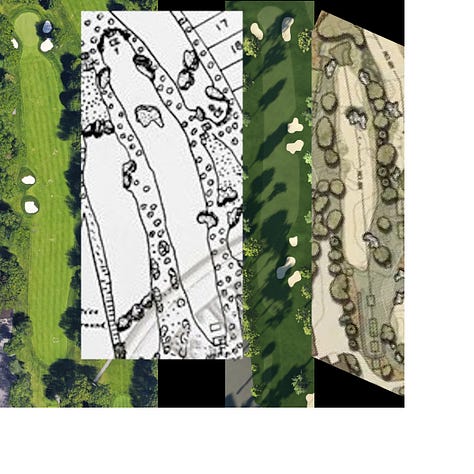
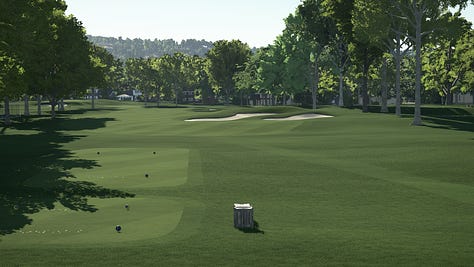
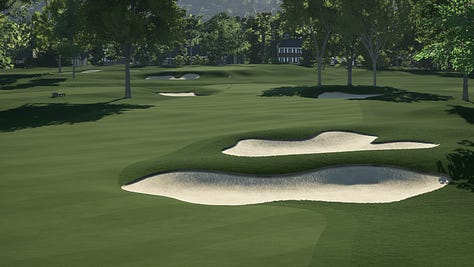
Hole 2 (Tournament; Hole 9 NC)
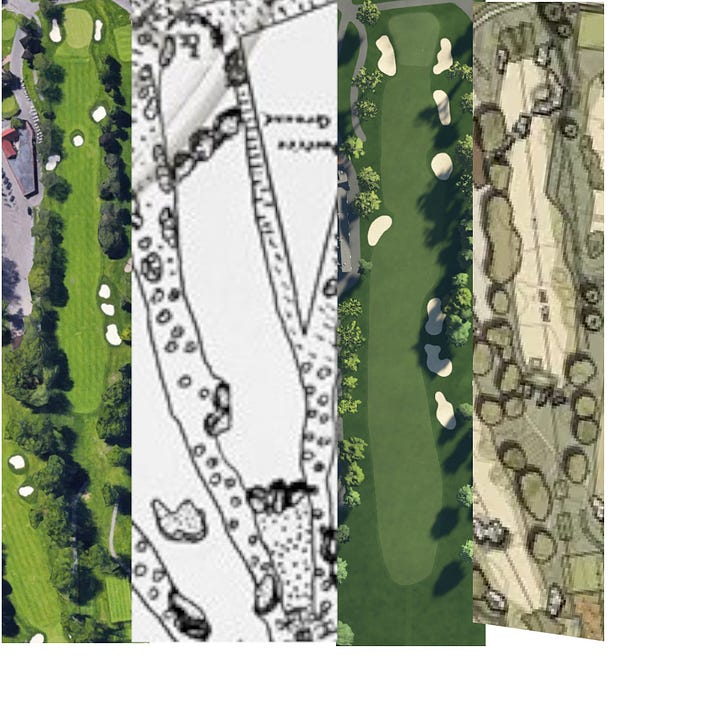
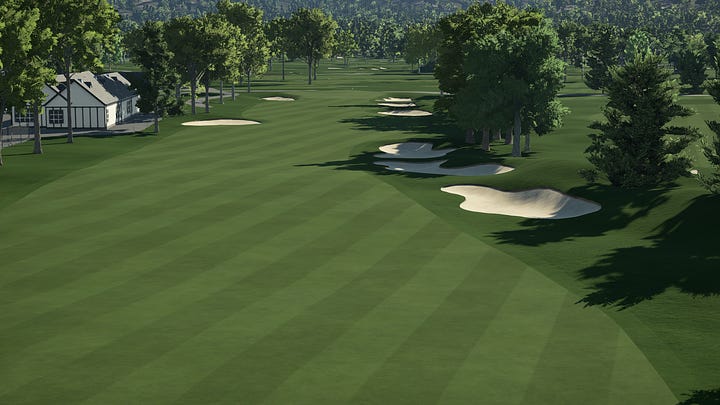
I chose here to keep the modern strategy of having to contend with bunkers down the right side if you want to stay away from OB left. Rae has adhered more to the original plan of a wider fairway, and a drainage ditch instead of bunkers. The green is much more protected coming from the right then left, however.
It’s hard to see from the drawing, but the trees between the practice ground and fairway have been mostly eliminated, and replaced with a drainage ditch that runs almost the full length of the fairway as a hazard.
The greenside bunkers have been moved forward and wrap slightly more around the front corners, protecting front pins, while new back right and back left tongues curl around the bunkers.
I support the changes, but I will be interested to see how the new intersection of the practice ground and this hole works.
Hole 3 (Tournament; Hole 1 NC)
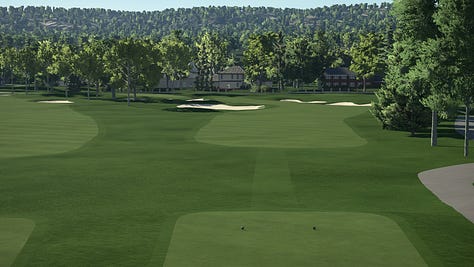
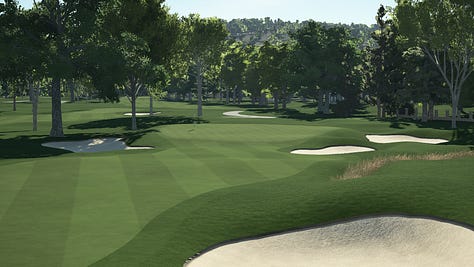

This is one of the biggest changes on the front 9. In the current tournament layout, the straight away North course 1st hole is unused. Instead, the 1st hole on the South course is used as the 3rd hole in the tournament routing. The tournament tee for the 4th hole then tees off directly over the North course 1st green.
As you can see in the Ross drawing, the original North course 1st hole was a dogleg left around a complex of bunkers, and would have naturally allowed the tournament 4th tee to exist without playing over another hole. I am happy to see the Tyler intends on restoring this hole and keeping the tournament all on the North course.
While this hole would function as a very short-4 for the pros, the drainage ditch cutting in front of the green really will make them have to think twice.
The green shape that Tyler has come up with here is very irregular, with a tough back left tongue and lots of areas to tuck pins and protect the scoring average here.
Hole 4 (Tournament; Hole 2 NC)
Hole 5 (Tournament; Hole 3 NC)
I expect this to be one of the better spots on the front 9. The green should be larger with trickier pin locations, the bunkers should frame the green better, the drainage ditch should provide some layering to the landscape, and the proximity of the new 7th green should make it one of the best viewing locations on the property.
Hole 6 (Tournament; Hole 4 NC)
Hole 7 (Tournament; Hole 5 NC)
I’ve heard someone say before that they like this hole due to the tree that comes in play on the left side, a little ways before the green. But come on, if we analyze this hole tee-to-green, it makes no sense. The main hazard on the hole is OB left, while the best approach to the green is to the right. Not only is there no incentive to challenge the left side, but then they went ahead and put a freaking bunker there, too!
The original dogleg of the green to the right and flipping of bunkers to the right side not only restores the strategy of the hole, it also creates an incredible amphitheater between the 7th green, 6th tee, 5th green, and 8th tee.
Finding the fairway here likely brings the green into play on the 2nd shot for most pros, but the addition of the drainage ditch across the fairway eliminates the mindless lay up for players who find trouble off of the tee.
Hole 8 (Tournament; Hole 6 NC)
One of the main benefits you will see from tree removal in the master plan is the view from the 8th hole now opened up to see the 9th hole beyond.
Hole 9 (Tournament; Hole 7 NC)
Hole 10
I like the addition of the cross bunkers before the green here. It doesn’t add a whole lot strategically for good players, but it adds a lot visually. It should be harder to get a comfortable view on the approach shot without hugging the left tree line off of the tee.
Hole 11
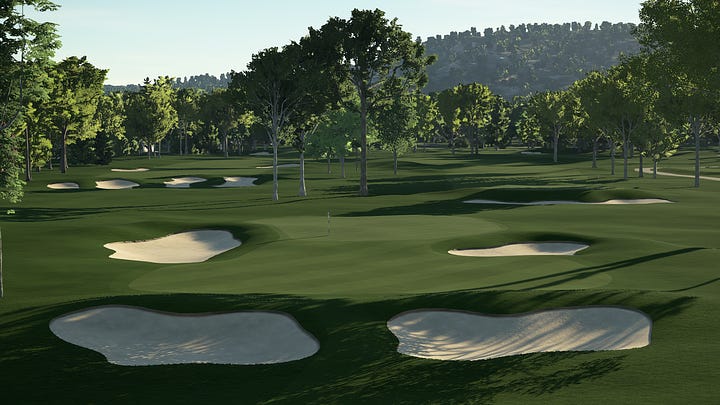
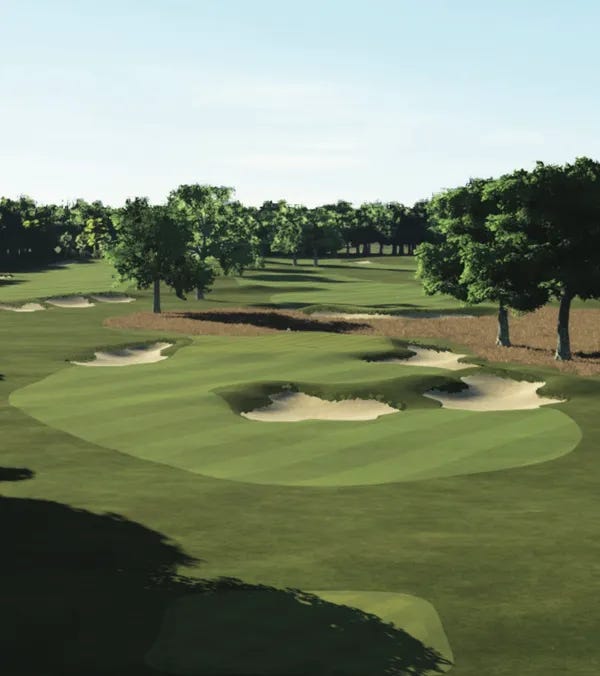
The course will gain a few hundred yards from the back tees during the renovation. This is one of the holes that will have a new tee, which will extend the hole to about 260 yards.
The removal of trees here, along with the addition of cross bunkers at the 12th hole and a back bunker behind the 13th green will improve the visuals here by a lot, and should be another great viewing location during the tournament.
Hole 12
As mentioned, the cross bunkers at the beginning of the fairway should do a lot of heavy lifting in helping to differentiate what is currently one of the blandest, most indistinguishable holes on the property.
Hole 13
For today’s 13th hole, take what I said about the 12th hole being indistinguishable, and then add in the hole being short and easy. The cross bunkers here, in addition to adding a very Ross-like flair to the hole, should make a world of difference.
Hole 14
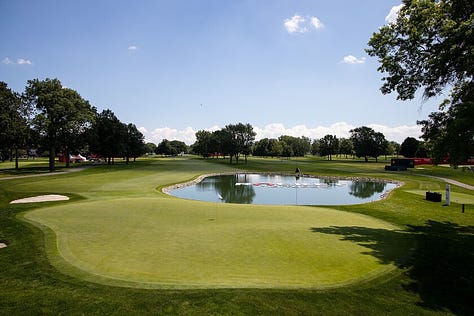
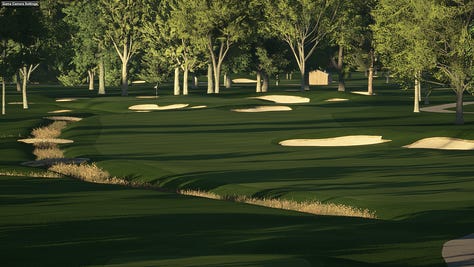
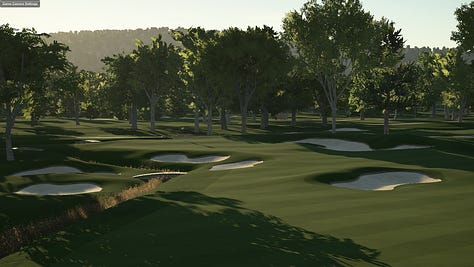
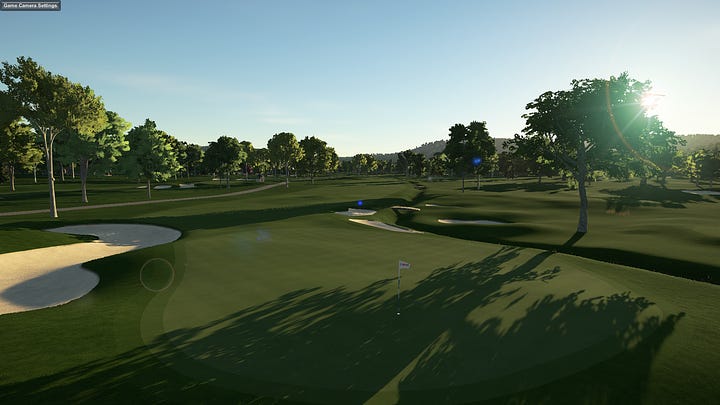
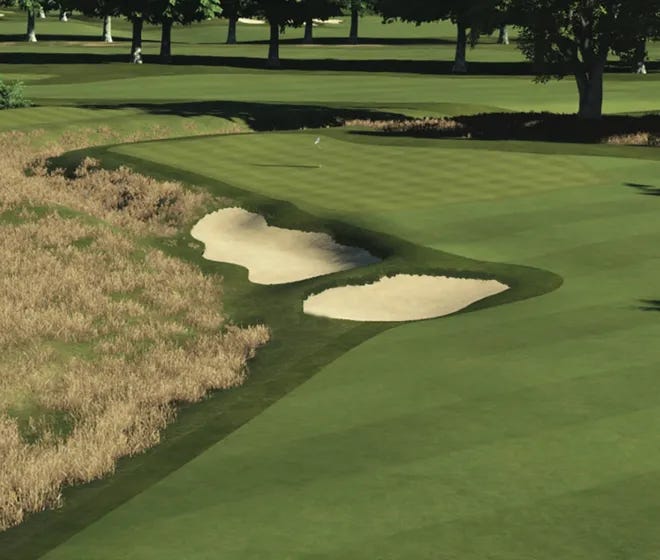
This will be by far the biggest change to the course, and I commend Tyler and the club for committing to it. The pond on the 14th, which is adorned during tournament week with a large Rocket Mortgage sign, is the signature feature on the course’s signature hole. It’s not original, though. It will be replaced by a nearly tee-to-green drainage ditch.
The ditch doesn’t provide the same penalty as water does. The pros might get a lucky break and be able to play out of it and onto the green for a birdie putt. Or they might take multiple hacks to get out, bringing a big number into play. The unpredictability of the hazard in comparison to the certainty of a water hazard is what makes it enticing.
Hole 15
I’ve always liked this hole. The short par-3 with a push-up green and deep bunkers feels very authentic Ross to. The decision to include the original drainage ditch along the right of the green, replacing the bunker there, should make for all kinds of interesting scenarios.
Hole 16
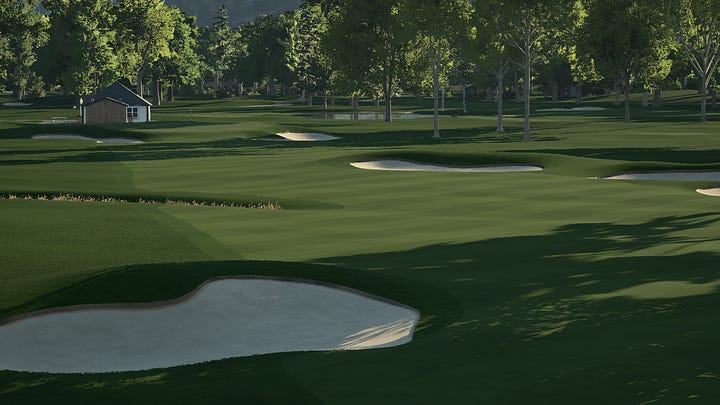
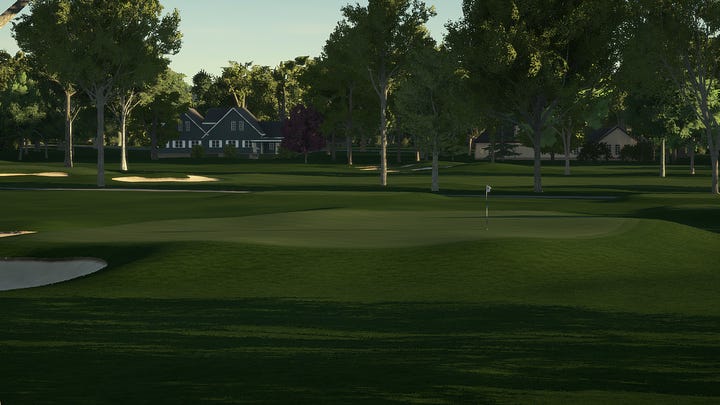
This is one of my least favorite holes on the back 9, as the squeezed in fairway bunkers on the right and left is so unimaginative to me. That element still remains to a degree in Tyler’s plan, but his bunkers at least look slightly staggered to me. I still would have preferred a drainage ditch element and some distance control required as in the Motown hole.
I like the addition of the combined fairway with the 17th hole here, which lends some relief from the typical tree-lined corridors that have defined the course for so long.
Hole 17
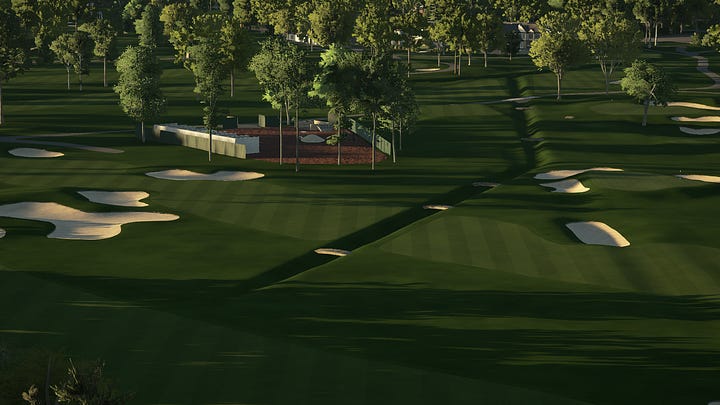
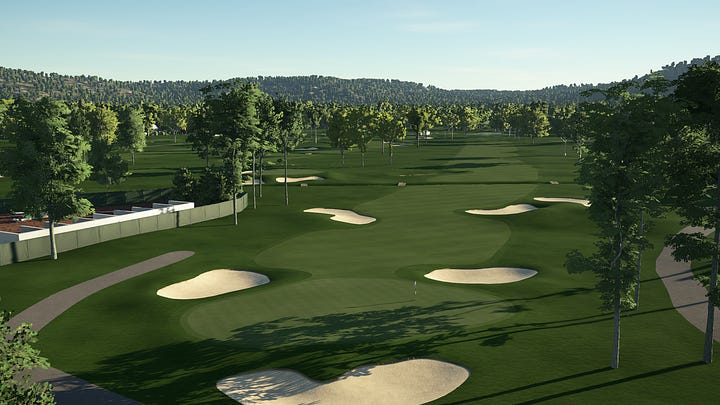
Including the South course in the renovation plans will pay dividends here, as currently a man made pond behind the 17th tee prevents any length being added to this par-5. The master plan calls for the pond to be removed, which will allow for a new tee at 17.
An extension of the drainage ditch from the 15th crosses through the 17th fairway. In addition to breaking up a long, straight hole, it could also potentially require a second thought if playing a recovery shot from one of the fairway bunkers.
Hole 18
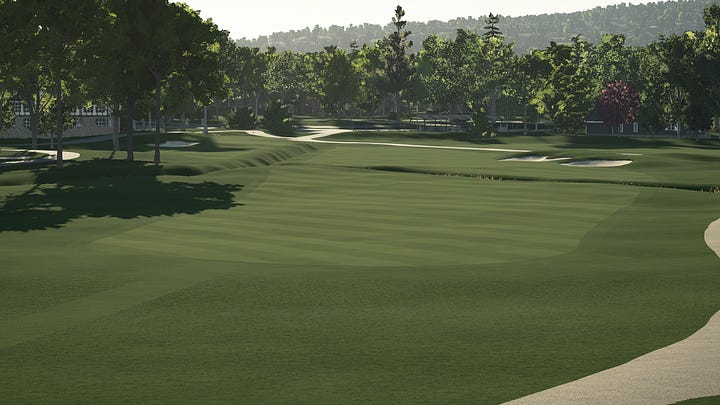
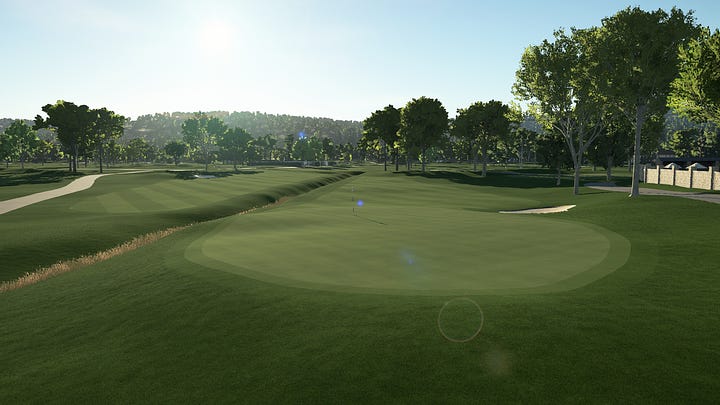
In the original Ross design, the drainage ditches from the 14th and 15th holes continued on to the Northwest, hugging the left side of the 18th fairway before crossing in front of the green. I don’t think that hole ever got built as depicted, however, as that would put the green approximately where the swimming pool is today. Instead it became just a slight dogleg, with the only remaining drainage ditch today currently splitting the fairway and running along the right side of the green.
The master plan calls for the original extension of the ditch from the 15th hole to be reintroduced, along with a new back tee box. Instead of bunkers on the right, it looks to now become irregular mounding. I don’t think clearing the ditch will be a factor off of the tee, but between the short ditch, the ditch on the left and long, and the mounding right, distance control becomes as much of a factor as accuracy.

